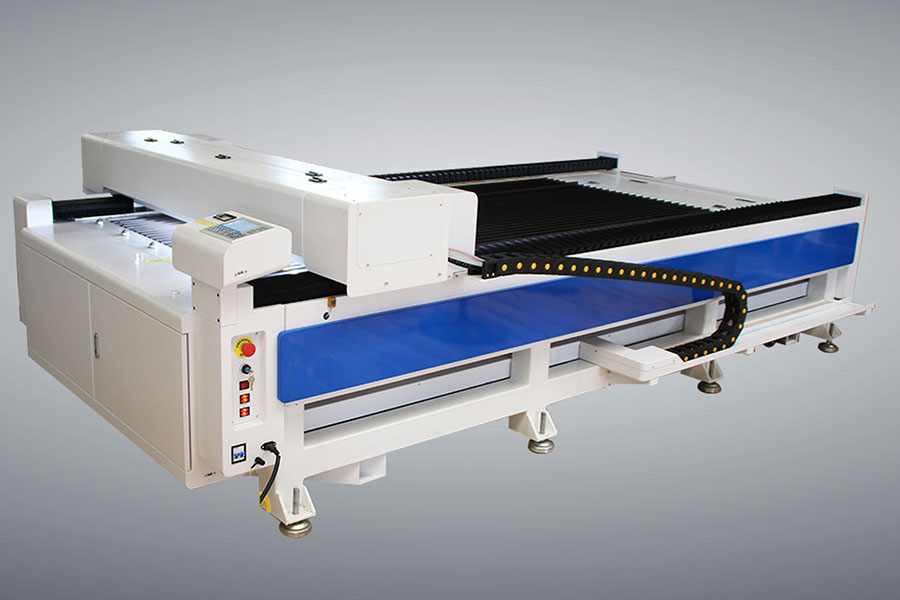
Laser cutting is the process of focusing the laser emitted from the laser into a high-power laser beam through an optical system. The laser beam irradiates the surface of the workpiece, causing it to reach the melting or boiling point, and high-pressure gas coaxial with the beam blows away the melted or vaporized metal. As the beam of light moves relative to the workpiece, the material ultimately forms a joint, thereby achieving the purpose of cutting.
Laser cutting processing uses invisible beams of light instead of traditional mechanical knives, with high accuracy, fast cutting, not limited to cutting patterns, automatic layout saving materials, smooth cuts, low processing costs, and will gradually improve or replace traditional metal cutting process equipment. The mechanical components of the laser blade have no contact with the workpiece, and will not scratch the surface of the workpiece during operation; Laser cutting speed is fast, the incision is smooth and flat, and generally does not require subsequent processing; The cutting Heat-affected zone is small, the plate deformation is small, and the cutting seam is narrow (0.1mm~0.3mm); The incision is free of mechanical stress and shear burrs; High machining accuracy, good repeatability, and no damage to the material surface; CNC programming, capable of processing any floor plan, capable of cutting large boards, economical and time-saving, without the need for mold opening.
Main processes
Vaporization cutting.
During the laser gasification cutting process, the speed at which the surface temperature of the material rises to the boiling point temperature is so fast to avoid melting caused by heat conduction. Therefore, some materials evaporate into vapor and disappear, while some materials act as jets blown away by auxiliary gas from the bottom of the seam. In this case, a very high laser power is required.
In order to prevent the vapor condensation of the material onto the joint wall, the thickness of the material must not significantly exceed the diameter of the laser beam. Therefore, this processing is only applicable to avoid the exclusion of molten materials. This processing is actually only used for small-scale applications of iron based alloys.
This processing cannot be used for materials such as wood and some ceramics, so it is unlikely to cause the material vapor to condense again. In addition, these materials typically require thicker cuts. The optimal beam focusing in laser gasification cutting depends on the material thickness and beam quality. The laser power and gasification heat have only a certain impact on the optimal focal position. When the thickness of the plate is constant, the maximum cutting speed is opposite to the gasification temperature of the material. The laser power density greater than/cm depends on the material, cutting depth, and beam focus. Assuming that the thickness of the sheet metal has sufficient laser power, the maximum cutting speed is limited by the gas jet speed.
2. Melt cutting.
In laser melting and cutting, the workpiece is partially melted and the material is melted by airflow spraying. This process is called laser melting cutting because material transfer only occurs in the liquid state.
The laser beam of high-purity inert cutting gas causes the molten material to leave the cutting seam, while the gas itself does not participate in the cutting. Laser melting cutting has a higher cutting speed than gasification cutting. The energy required for gasification is usually higher than the energy required for melting the material. The laser beam is only partially absorbed in laser melting and cutting. As the laser power increases, the maximum cutting speed is almost opposite to the increase in plate thickness and material melting temperature. At a certain laser power, the limiting factors are the gas pressure at the cutting seam and the thermal conductivity of the material. Laser melting cutting can obtain non oxidation notches for iron and titanium materials.

